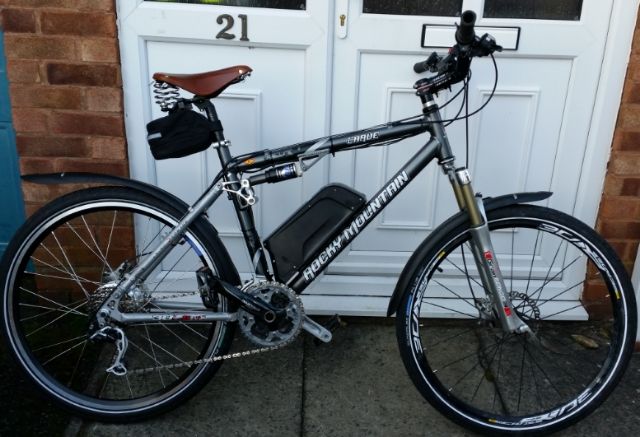D
Deleted member 4366
Guest
The rivnuts are easy enough to install. Even if you have bottle mounts, you should still put in an extra one so that you have three screws holding the battery. That video makes it look too complicated. I just drilled the hole, tapped the rivnut in and did up the screw tight to compress the rivet. That's it - no special tools or procedures, but make sure the hole is the right size so that the rivnut is tight enough to require tapping down.
Controllers calculate the current flowing from the battery to the motor by measuring the voltage drop across a very low value resisistor, typically about 0.005 to 0.01 Ohms. There's two types of shunt: solid state ones and wire ones. The wire ones look like about an inch of coat-hanger wire, and are often located behind the end-plate of the controller, so can be accessed easily. Most Lishui controllers have the shunt lying along the PCB under the main capacitor, so if you've ordered the Lishui, you'd probably have to dismantle the controller to get to it.
If you add solder to the shunt, you reduce its resisistance, so you get less voltage drop and the cpu thinks the current is lower than it is. It therefore allows higher current. Adding solder is best done when you have a wattmeter connected so that you can see what the new maximum current is.
If you have a solid state shunt, you can change its value by soldering a similar one over the top of it. Let's say you have a single .010 ohm one. By adding a .020 over the top, you end up with ,0067 ohms, which will give a 33% increase in current. Adding a 0.030 will give 0.075 ohms, which is a 25% increase.
Controllers calculate the current flowing from the battery to the motor by measuring the voltage drop across a very low value resisistor, typically about 0.005 to 0.01 Ohms. There's two types of shunt: solid state ones and wire ones. The wire ones look like about an inch of coat-hanger wire, and are often located behind the end-plate of the controller, so can be accessed easily. Most Lishui controllers have the shunt lying along the PCB under the main capacitor, so if you've ordered the Lishui, you'd probably have to dismantle the controller to get to it.
If you add solder to the shunt, you reduce its resisistance, so you get less voltage drop and the cpu thinks the current is lower than it is. It therefore allows higher current. Adding solder is best done when you have a wattmeter connected so that you can see what the new maximum current is.
If you have a solid state shunt, you can change its value by soldering a similar one over the top of it. Let's say you have a single .010 ohm one. By adding a .020 over the top, you end up with ,0067 ohms, which will give a 33% increase in current. Adding a 0.030 will give 0.075 ohms, which is a 25% increase.
Last edited by a moderator:






